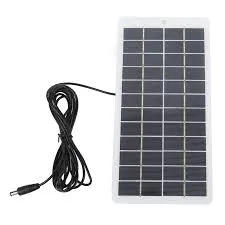solar string inverters
Understanding Solar String Inverters A Key Component in Photovoltaic Systems
In the rapidly evolving world of renewable energy, solar power stands out as one of the most promising alternatives to fossil fuels. Among the vital components of solar energy systems, solar string inverters play a crucial role in converting the direct current (DC) generated by solar panels into alternating current (AC), which is used by our electrical grids and appliances. This article delves into the functionality, advantages, and considerations associated with solar string inverters.
What are Solar String Inverters?
Solar string inverters are a type of inverter commonly used in photovoltaic (PV) systems where multiple solar panels are connected in a series, or string. Each string of solar panels feeds into a single inverter, which then converts the aggregated DC electricity into AC. This configuration contrasts with microinverters, which are installed on each individual panel, allowing for more localized control but at a higher cost.
How Do They Work?
The operation of solar string inverters is relatively straightforward. When sunlight hits the solar panels, they generate DC electricity. This electricity is then directed to the string inverter, where it undergoes conversion to AC. The inverter regulates voltage levels and ensures that the electricity matches the frequency of the grid, making it suitable for household or commercial usage.
String inverters also come equipped with a range of functions, including Maximum Power Point Tracking (MPPT), which optimizes the energy yield from the solar panels by adjusting the electrical operating point. This feature is particularly beneficial in conditions where shading or varying light conditions affect different panels in the string.
Advantages of Solar String Inverters
1. Cost-Effectiveness One of the primary benefits of solar string inverters is their cost efficiency, especially for larger installations. They typically have a lower upfront cost compared to microinverters, making them an attractive choice for residential and commercial users looking to minimize the initial investment in solar technology.
solar string inverters

2. Simpler Installation Solar string inverters are generally easier to install compared to other inverter types due to their centralized nature. With fewer components and less wiring required, installation can be quicker and less complex.
3. Reliability and Maintenance These inverters boast a reputation for reliability. Many models are designed for easy maintenance and access, which can simplify troubleshooting if issues arise. Moreover, since the inverter is a single unit, it minimizes the points of failure compared to systems with multiple microinverters.
4. Scalability For homeowners and businesses looking to expand their solar capacity over time, solar string inverters offer scalability. Since additional panels can be added to the existing string, it provides flexibility without necessitating a complete overhaul of the system.
Considerations and Challenges
Despite their many advantages, solar string inverters are not without their limitations. A key consideration is the impact of shading. If one panel in a string is obstructed by shade, dirt, or damage, it can reduce the output of the entire string, leading to decreased overall efficiency. This is less of an issue with microinverters, which allow each panel to operate independently.
Another consideration is the inverter’s lifespan. While string inverters typically last around 5 to 10 years shorter than microinverters, technological advancements and improved quality have begun to bridge this gap.
Conclusion
Solar string inverters play a vital role in optimizing solar energy systems for both residential and commercial applications. Their affordability, simplicity of installation, and reliability make them an appealing option for those looking to invest in solar technology. However, potential users should carefully consider their specific needs, especially regarding shading and the potential for system expansion. As the world continues to shift towards cleaner and more sustainable energy sources, understanding the components of solar energy systems – like string inverters – will empower homeowners and businesses alike to make informed decisions about their energy use and carbon footprint. With advancements in inverter technology, the future looks promising, heralding a new era in efficient and sustainable energy production.
-
Unlocking Energy Freedom with the Off Grid Solar InverterNewsJun.06,2025
-
Unlock More Solar Power with a High-Efficiency Bifacial Solar PanelNewsJun.06,2025
-
Power Your Future with High-Efficiency Monocrystalline Solar PanelsNewsJun.06,2025
-
Next-Gen Solar Power Starts with Micro Solar InvertersNewsJun.06,2025
-
Harnessing Peak Efficiency with the On Grid Solar InverterNewsJun.06,2025
-
Discover Unmatched Efficiency with the Latest String Solar InverterNewsJun.06,2025







